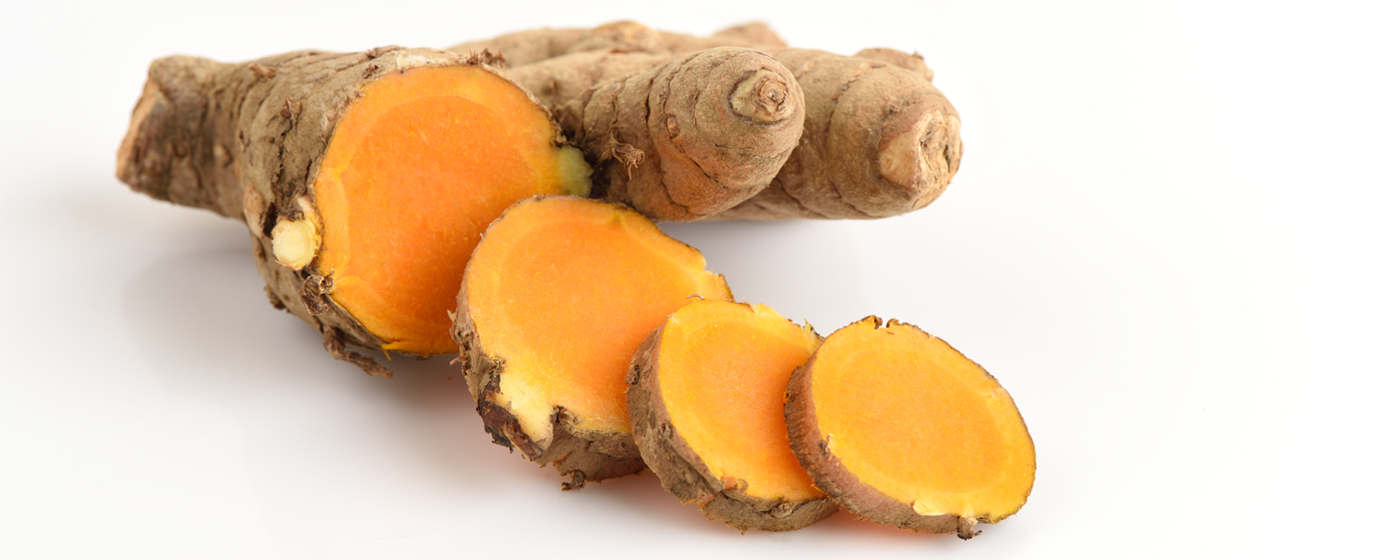Turmeric
A ‘multipurpose’ perennial grown in intertropical regions, turmeric has been an important part of Asian sociocultural life for centuries. It can be used as a colouring agent, a preservative, a spice or a remedy in Ayurvedic and natural medicine. It is becoming increasingly prized for its therapeutic antioxidant, digestive, diuretic, emollient and cosmetic properties.
Turmeric, from religious ritual to functional food
Turmeric is a sacred spice used in religious rituals and is mentioned in Sanskrit texts dating back more than 4000 years. It was probably originally grown in India for its colouring and medicinal properties. The Arabs introduced it to Spain, which was, for a long time, the only European country to use the spice in its cuisine. East to West trade explains the different names given to the spice. It was called cúrcuma in Spanish, after its Arabic name, kurkum, meaning saffron, leading it to be mistakenly referred to as Indian saffron or the poor man’s saffron. Having been used for centuries as a powerful dye, in the 17th century, turmeric was even used to give a ‘gold’ appearance to certain metals. Its use as a food colouring dates back to 18th century Europe. At the end of the 19th century, margarines and cheeses were often ‘coloured’ with turmeric. Today it is associated with Indian cuisine and numerous studies praise the therapeutic properties of this spice. India is the world’s largest producer of turmeric, consuming 90% of the spice, with 2 g per day per inhabitant.
Turmeric, the properties of the plant
Turmeric, Curcuma longa L., is a perennial plant growing in tropical or subtropical regions, which resembles a miniature banana tree. Several parts of the turmeric plant are used in cooking and medicine, especially the rhizome, the underground stem. Turmeric (curcuma) is not to be confused with caraway or cumin.
The curcumin contained in turmeric rhizomes constitutes turmeric’s colouring compound.
A key ingredient in Ayurvedic medicine and highly valued in other natural medicines, this spice is renowned as a strong antioxidant and for its anti-inflammatory, antiseptic and hypoallergenic properties. Hence the many studies currently being undertaken by various scientific laboratories. Turmeric is also used in hair products and cosmetics.
A friend of so many spices in cooking
The juice of the fresh turmeric rhizome lends a bright colour to rice-based ceremonial dishes in Southeast Asia. The fresh leaves are used as a condiment in Malaysia. In Thailand, the young shoots and inflorescences are eaten as a vegetable. The rhizomes can be used to preserve food, as their antibacterial properties prevent the oxidation of fats. Turmeric is most commonly used in the form of powder derived from its rhizomes, as a key ingredient of curries and other Indian, West Indian, North African or Japanese spice mixes.
In cooking, turmeric colours, flavours, corrects acidity or, combined with lemon, can mask the strong odour of dried fish in certain dishes. Slightly peppery, with a hint of bitterness, it has a spicy, sharp flavour with notes of orange and nutmeg.
Nutrition
Rich in iron, phosphorous, potassium, calcium, magnesium.
A good-luck charm
In India, turmeric is placed on the forehead of newborn babies and sprinkled on the saris of brides as a good-luck charm. Some Pacific Island tribes wear a piece of the spice as an amulet to ward off evil spirits.
KIPLE, F. Kenneth et ORNELAS, Kriemhild Conneè, 2000. Turmeric. In: The Cambridge History of FOOD. Vol. 2. p. 1873. Cambridge : Press Syndicate of the University of Cambridge. ISBN: 0521402158.
FORTIN, Jacques (éd.), 1997. Curcuma. L’encyclopédie des aliments. p. 495. Paris: Éditions Fontaine. ISBN : 2842700511.
GASPARD-DAVID, Elyse, 1996. Le curcuma, le gingembre et le galanga. In : L’homme et la ronde des épices. p. 53. Lyon : ARPPAM-Edition. ISBN : 2902913237.
HUTTON, Wendy et CASSIO, Alberto, 1997.Herbes et épices tropicales. Paris : Periplus Éditions (HK). ISBN: 2878680383.
NORMAN, Jill, 1991. Les EPICES leur emploi dans la cuisine d’aujourd’hui. Lausanne : Éditions Mondo SA. ISNB : 2881682332.
ROBERT, Jean-Louis, 1986. Le livre des épices et des herbes. Paris : Flammarion. ISBN : 2082000540.
1987. La route des épices. Paris : Bordas. ISBN : 2040129286.



